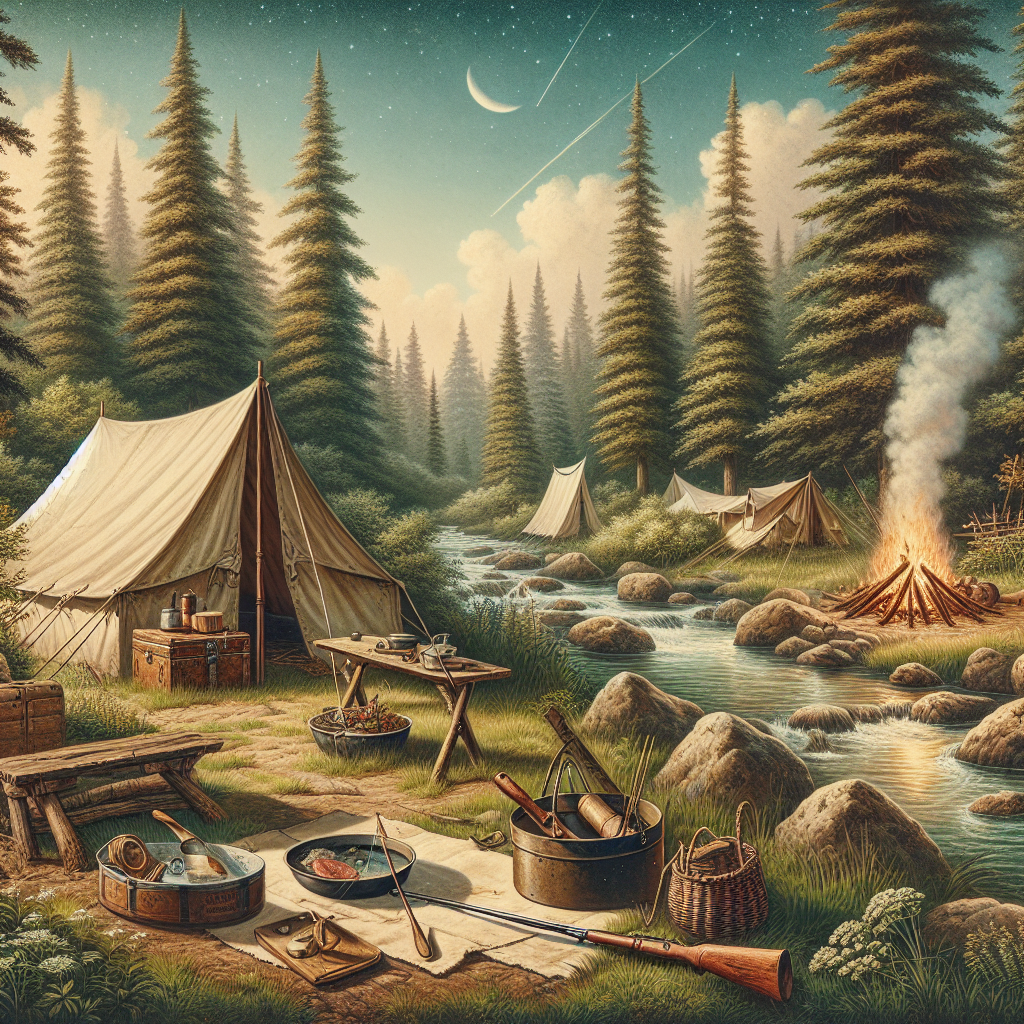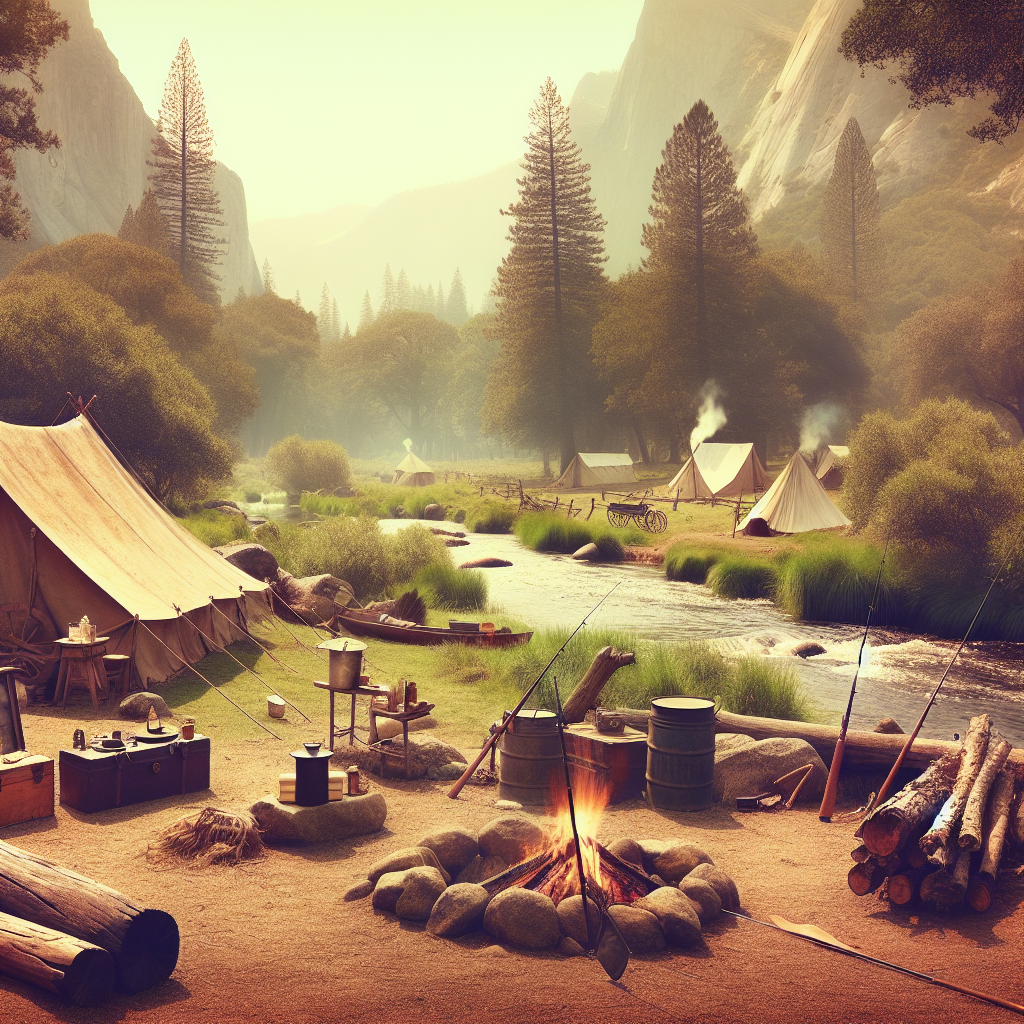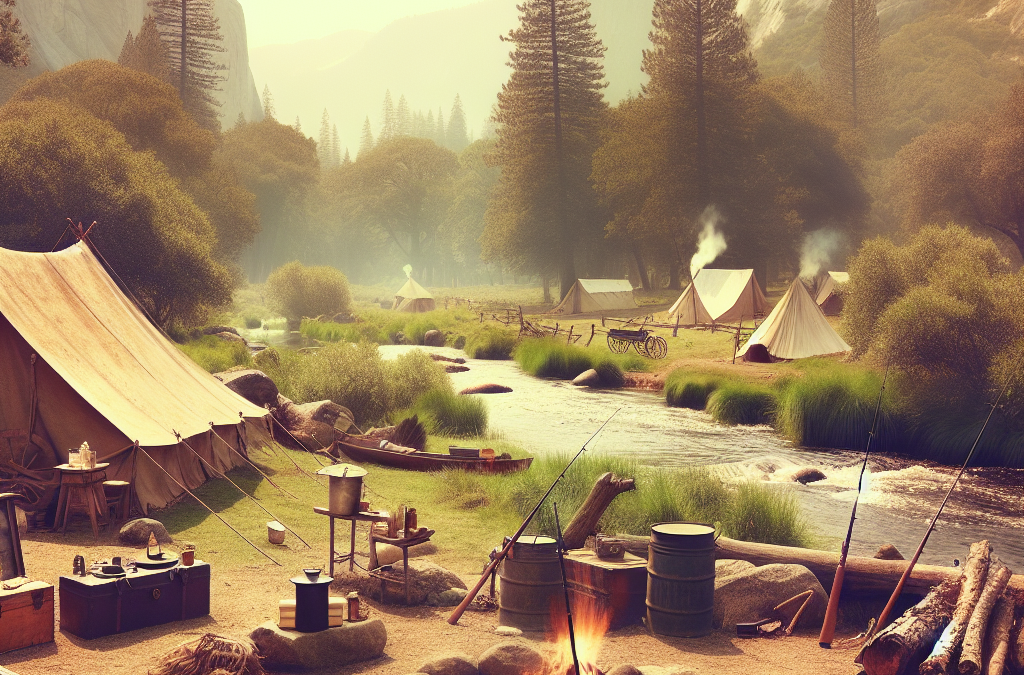Don’t you just love the feeling of serenity and freedom that basking in the great outdoors awards you? The sense of connection with nature and the thrill of adventure? Imagine sitting by a campfire under a blanket of stars recounting tales of past exploits and future adventures. If you’ve ever wondered how Camping became such a beloved pastime, you’re about to take a fascinating journey with TrailTrekTribe. Engross yourself in the captivating exploration of “The History Of Camping: A Look Back In Time”. In this informative piece, you’ll get an insight into how the world fell in love with this form of outdoor escapade. Come and join your tribe as we trace the evolution of camping through the ages, reflecting its continued passion among enthusiasts of the great outdoors.
Primitive Beginnings: How Early Humans Survived the Wilderness
Survival is the fundamental instinct that drove early human behaviours, including their migratory habits. Your primitive ancestors were primarily nomadic tribes, perpetually in search of food, water, and warmer climates. These early human migrations were seasonal, based on the availability of herds of animals or ripe fruits and roots. Over time, their routes became more predictable as they developed an understanding of the natural world around them.
Shelter was a basic necessity for these early humans, necessary for protection from the elements and predatory animals. The use of cave dwellings offered a natural shield, but as humans migrated further into the wilderness, they were compelled to use resources around them to build temporary shelters. Using the skills of observation and innovation, early humans fashioned huts, lean-tos, and eventually more complex structures using wood, leaves, and animal skins.
Camping for early humans was not a leisure activity, as it might be for you today, but a way of life, born out of absolute necessity.
Cultural Significance of Camping Through the Ages
As civilisation progressed, camping took on more cultural nuances and became intertwined with religious and military practices. Religious retreats and long pilgrimage camps became a norm, with devotees embarking on lengthy journeys to sacred sites. These pilgrims would essentially create makeshift camps, strengthening their bond with the divine through the simplicity and austerity of life outdoors.
The use of camping strategies became crucial in the military sphere, especially during wartime. The need for soldiers to live and strategically position themselves in the field gave birth to tactical camping. These camps usually featured fortifications and were used as a base for launching operations and providing aid and respite to soldiers.
The cultural importance of camping is also showcased by traditional nomadic tribes. For these tribes, camping was not just survival, but a deep-rooted tradition and way of life, influencing their social structures, economy, and rituals.

Camping During the Exploration Era
The exploration era brought about a reinvention of camping strategies. Explorers and pioneers, in their quest to chart unknown territories, had to master survival skills to cope with harsh and unfamiliar environments. These rigorous experiences contributed to the development of more diverse and efficient camping methods.
The impact of new-world explorations is clearly seen in how the latest techniques and equipment were merged with ancient survival skills to help explorers thrive in hostile environments. During this era, the line between survivalist and leisure camping became more distinct. Survivalist camping maintained a stronghold in exploration, while leisure camping gradually emerged as people began to toy with the idea of camping for enjoyment and to connect with nature.
Role of Camping in Scientific Expeditions
Camping also played a significant role in various scientific expeditions. These excursions required special camping equipment such as advanced navigational tools and temperature-resistant tents for harsh conditions. The influence of scientific camping was profound, leading to the modernisation of various camping techniques and gear.
The evolution of camping gear significantly progressed in light of scientific advancements. From the rudimentary tents constructed by early humans to the sophisticated versions used today, the progress is a testament to human innovation and the uncompromising thirst for knowledge.

Advent of Recreational Camping
The late 19th century witnessed the origins of recreational camping, particularly in North America. Inspired by the romantic sentiments towards wilderness, people began engaging in camping activities for relaxation and adventure. This era popularised the idea of camping as a healthy, adventurous, and enlightening endeavour rather than a survival necessity.
The prominence of recreational camping also had a considerable impact on health trends. It heralded a new era of holistic well-being, combining physical activity, mental relaxation, and communion with nature. It also shaped societal views on nature, transforming the wilderness from a place of danger and uncertainty to a space of beauty, tranquillity and adventure.
Camping as a Youth Activity: The Scouting Movement
The inception of Scouting introduced camping into youth programs, aiming to build discipline, resilience, and a stronger affinity towards nature. The concept of camping was incorporated into Scouting as a fun yet educational method to develop essential skills like navigation, first aid, and knot-tying among young people.
The Scouting movement also had a profound influence on camping equipment and practices, creating a demand for child-friendly, safe, and portable camping gear.
Impact of War on Camping: Military Developments
The World Wars drastically influenced camping gear and methods. Military innovations introduced technologies such as lightweight and durable tents, compact sleeping bags, and portable cooking stoves, which were later adapted for leisure camping.
The long-term impact of these military advancements on modern camping is undeniable. The simplicity of camping married with military technology expanded the possibilities for the common outdoorsman, elevating the convenience and comfort factors.
Camping in the Post-War Period: The Golden Age
The Post-War period declared a golden age of camping, buoyed by a post-war economic boom. Owning a car became achievable for the average family, and with it dawned the era of car camping. Families began embarking on road trips, with camping emerging as an exciting, affordable adventure.
Modern Camping: Innovation and Tech Boom
The recent tech boom has ushered in a new phase of modern camping. High-tech gear such as GPS devices, solar chargers, and temperature-controlled sleeping bags became part of the camping routine, enhancing the overall outdoor experience.
The evolution of camping tents and sleeping bags, in particular, is marked by innovations prioritizing comfort and portability. Furthermore, the internet and digitalisation play a significant role in current camping culture, streamlining planning and making information more abundant and accessible.
Future of Camping: An Outlook
The future of camping is indeed exciting, with technologies like virtual reality bringing in a wholly new dimension. However, the emphasis on sustainable and eco-friendly camping is essential in preserving the very essence of camping – the allure of nature.
Moreover, the emergence of survivalist camping in response to global changes is gaining traction, revealing the primitive side of camping once again. Just remember, whatever the reason be for camping, the joy of embracing the thrill of the outdoors will always remain constant.

